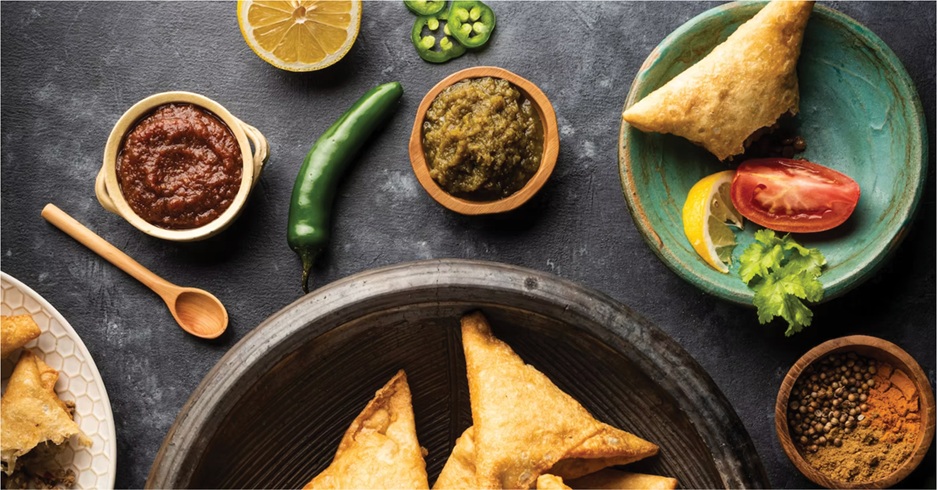Launched in 2015, Hoyo embarked on a journey to fill an important employment and cultural food gap in Minnesota’s economy. The state is home to the largest population of Somalis in the country, but at the time, statistics indicated that Somali refugees had a 21% unemployment rate in the state.
To help address this shortfall, Hoyo (“mother” in Somali) was founded by three Somali sisters and a family friend. It provides refugees and other new immigrants with job experience in food production and also offers Somalis a chance to share their culture with the Twin Cities community through a traditional and beloved food product: the sambusa.
This handcrafted triangle is a flaky pastry with a savory filling of ground beef or lentils, vegetables, and spices. One Hoyo customer said it was “the best-tasting triangle I’ve ever had.” In addition to this handheld meal, Hoyo launched a line of sauces to accompany the sambusas at the request of local customers. Flavors included basbaas, tamarind, and dates.
Ghita Worcester, interim CEO of Hoyo, says the Agricultural Utilization Research Institute (AURI) has been a “foundational supporter” of the company since its beginning.
“Lolly [AURI’s senior scientist, food], in particular, has been a great resource for Hoyo’s team to fully understand the certifications required for a food production company to move from a farmer’s market stall to producing products for Minnesota’s schools and retail stores,” she says.
AURI’s Food Team also assisted Hoyo with nutrition facts for its packaging, lentil sambusas, and sauces, as well as with educational training programs, product launches, grant opportunities, networking in Minnesota’s food sector, and product formulation statements. “AURI is Hoyo’s ‘go-to’ organization for support as we develop new products for the marketplace,” Worcester explains.
Additionally, AURI added value to Hoyo’s business model by identifying numerous manufacturers of locally sourced ingredients for Hoyo’s products. Purchasing local ingredients is a staple of Hoyo’s mission and values and supports its community-based focus as a Social Benefit Corporation.
Where Are They Now?
In 2021, Hoyo began producing sambusa for school lunch programs, the first of which was in Rochester, Minnesota. School sales increased from $7,000 in 2021 to $750,000 in 2024.
Hoyo recently signed a lease to create the Hoyo Food Production Facility on the lower level of the Midtown Global Market in South Minneapolis. This new facility will provide 40-50 jobs.
“The Midtown Global Market is positioned well for Hoyo to engage in community revitalization and offer a ‘cultural destination’ food option, showcasing a Somali meal and sauce options,” Worcester says. “The increasing momentum with Hoyo’s growth is formulating a long-term goal for Hoyo to become a food production company that revitalizes local communities in the Midwest by developing and producing culturally differentiated food with new immigrant groups.”
The plant is scheduled to open in May 2025, and in the fall, Hoyo plans to release a new chicken sambusa and a coconut-lime sauce.
Today, Hoyo serves 27 school districts (comprising 270,000 students) and aims to increase that number.
“We plan to extend our market reach to many more schools and stores in the Midwest in 2025-2027 by making up to 2 million sambusas a year,” Worcester says. “We currently make approximately 70,000 sambusas a month (by hand) and will bring that number up to 167,000 per month (by hand and semi-automatic machinery).”
Along with school lunches, Hoyo sambusas can be found in the frozen food section of several Twin Cities metro grocery stores and co-ops, while its sauces can be found next to the salsas. This year, Worcester hopes to have products available in more grocery stores and at the Minnesota State Fair.
